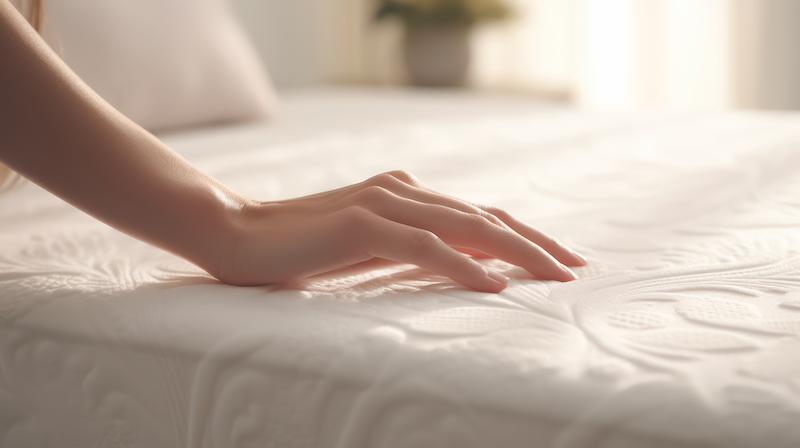The latest research from the Better Sleep Council offers insights into why and when consumers purchase new mattresses.

Many consumers have heard the guidance that mattresses should be evaluated for comfort and support approximately every seven years. That’s what the Better Sleep Council, which leads consumer research and education for the International Sleep Products Association, recommends. The latest research from the BSC reveals that consumers replace their mattresses due to various factors, including mattress deterioration, disposable income, health reasons or the introduction of new technology.
What are the most common influences on consumer behavior when purchasing and replacing mattresses? The survey reveals those and more, including consumers’ current experiences with their mattresses, the triggers that inspire them to act, the replacement cycle, mattress pricing and their purchase experience. In future issues, Sleep Savvy will cover all those subjects in more depth, but for now, keep reading for insights into the minds of today’s shoppers, compiled using data from 1,039 respondents ages 18 or older.
Bye-bye mattress
For 34% of people, the age of their mattress triggers them to buy a new one, but other factors can also influence a consumer’s return to the marketplace. The most common reason for replacement (77%) is the deterioration of the mattress itself, including discomfort, sagging in the middle or becoming too noisy or squeaky. Next is a health or comfort reason (71%). Among those who get a new mattress for health reasons, their top cause for replacement (cited by a little more than half of respondents) is the feeling that it is no longer providing a good night’s sleep, followed by the mattress being too soft (25%), body changes like weight gain or aging (14%), the mattress being too firm (12%) or a doctor’s recommendation (10%).
Other triggers include mattress improvement or upgrades (37%) and home or lifestyle improvement (34%). The home improvement group is more likely to have a mattress four years old or less when compared with those whose mattresses are five years or older (37% vs. 28%).
Of those who purchased a new mattress for home improvement, 16% said they made the purchase because they were moving to a new house or apartment. Other reasons included needing a mattress for a guest room or a kid’s room (12%); a lifestyle change such as marriage, divorce or a new job (9%); or redecoration (7%).
Fulfillment, choice and price — in that order — are the top three factors when choosing a particular retailer.
Something new
According to the study, most consumers expect a mattress to last between eight and 10 years. Nearly half of respondents said they replaced their mattresses within seven years. So, once consumers decide to shop for a new mattress, what do they plan to buy? And when?
Of the 81% of respondents who said they were planning to replace their mattress, 33% plan to do it within two years, compared with 8% in the next few months. Those on longer timelines for replacement expect to purchase a mattress in the next three to four years (19%), five to seven years (16%) or eight to 10 years (8%). A small 5% planned to wait 11 years or longer. Although most knew when they would replace their mattresses, 13% of consumers were unsure. Surprisingly, 6% stated they did not plan to replace their mattress.
A little more than half of respondents with replacement plans intend to buy only a mattress, compared with 36% who plan to get a new mattress set (mattress and flat box spring or foundation), and 13% who plan to purchase a mattress and adjustable foundation. For consumers who expect to buy a mattress soon, many know the size they’ll be purchasing and how much they want to spend. According to the survey, eight in 10 respondents would buy a king, California king or queen size. On average, those consumers are willing to spend around $1,300 for a mattress or a mattress set. Smaller sizes are less popular, with just 10% of consumers intending to buy a full-size or double mattress, followed by 4% who plan to purchase a twin size.
On brand
The power of advertising is well-
documented, and the sleep products industry is no exception. One-third of consumers who have purchased a mattress say that an advertisement was one of the reasons they began shopping, typically prompted by a sale, a special offer or a coupon. Advertising messages about state-of-the-art technology (39%) and a new mattress brand (26%) also inspired purchases.
Interestingly, two-thirds of consumers say that their current mattress is a different brand than their previous mattress. Further broken down, those consumers’ top three reasons for purchasing a different brand included a low price or discount (38%), better brand reputation (31%) or dissatisfaction with their previous mattress or mattress set (21%). Of the 13% of consumers whose current mattress is the same brand as their previous mattress, almost half said it was related to satisfaction with their previous mattress or mattress set. Perhaps unsurprisingly, fewer than half of consumers say they are highly likely to purchase the same brand as their current mattress. According to the survey, only one-quarter of respondents say they are “highly knowledgeable” about mattress brands.
Area of influence
The research also analyzed 30 features and characteristics that influence consumers’ mattress purchasing decisions. Ultimately, fulfillment, choice and price — in that order — are the top three factors when choosing a particular retailer. In the fulfillment category, the most important services for consumers were free delivery (60%), free pickup of discarded or old mattresses (38%) and easy returns (26%). The factors that scored the lowest included online chat support (5%) and offering appointment-only shopping (3%), suggesting that these have less influence on consumers’ decision-making.
When considering pricing, a little over half of respondents considered low prices or discounts in their shopping, while 19% were motivated by financing options. In the category of choice, the top drivers were a wide selection of mattresses (42%) and the ability to comparison shop (29%). After fulfillment, choice and price, other considerations included a retailer’s reputation, sales associates, the retail environment, warranties and the benefits of the mattress, including potential for health improvement or details about its construction.
This latest report from the BSC offers insights into what draws consumers to the sleep products marketplace and highlights the factors influencing their shopping and decision-making processes. Since its inception in 1996, the BSC has educated the public about the role of sleep in health and the importance of a quality mattress and sleep environment.
Read more Better Sleep Council research, Bedding Research Reveals When Consumers Replace Pillows & Mattress Shopping Preferences.







